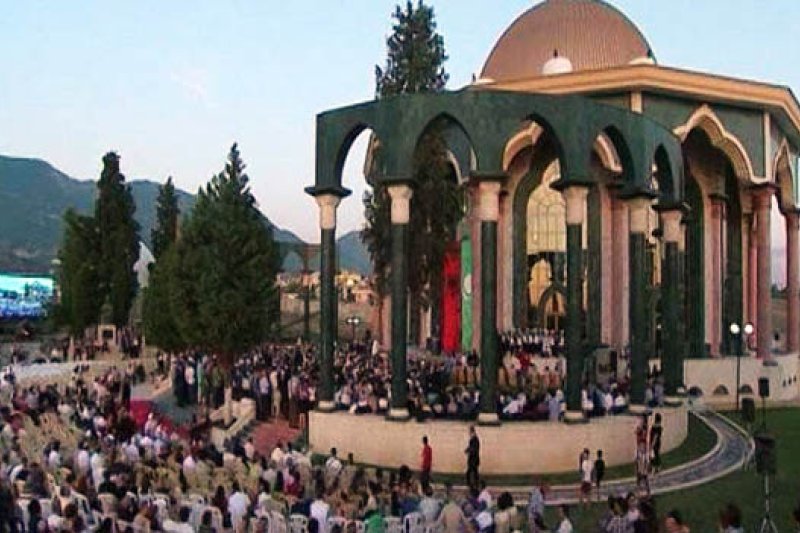Albania Celebrates Nevruz Day
Albania celebrated Friday the Nevruz Day. In Albania this day, commemorates the birthday of Ali ibn Abi Talib (died 661 CE) and simultaneously the advent of spring. Declared a public holiday in 1996 this is a national holiday as it is prominent amongst the nation's Bektaxhis (because of their Shia affiliations), but adherents of Sunnism, Catholicism and Orthodoxy also "share in the Nevruz festival to respect the ecumenical spirit of Albania".
On the occasion of this day, Prime Minister, Edi Rama congratulated all the believers while shared images from the Tekke of Kuzum Baba in Vlora.
History of Nowruz
This is one of humanity's oldest holidays, and although it may be often called Persian New Year, it predates the Persian Empire and can be traced back 5,000 years to the Sumerian and the Babylonian civilisations. Novruz begins on either 20 March or 21 March, on the spring equinox, when the days and nights are equal lengths, with days then becoming longer signifying the arrival of warmer weather.
The build-up to Novruz begins a month before the festival. Each of the four Tuesdays falling before Novruz is dedicated to a different element. First is Water Tuesday, where water renews nature. Next is Fire Tuesday which honours fire as a method rebirth. Then it is Earth Tuesday marking the revival of the earth. Finally, it is Wind Tuesday when the wind opens the buds and marks the arrival of Spring.
Fire worship forms an integral part of the celebrations with fires being lit on the four Tuesdays in the run-up to Novruz. On the last Tuesday, everyone has to jump over the fire as an act of purification.
Like a lot of spring festivals, this idea of purification and starting again is key. Indeed, before Novruz, activities based on renewal like spring cleaning, planting trees, make new clothes and painting eggs are popular.
On the day before Novruz, the graves of relatives are visited and tended, then the whole family will gather around the table to enjoy traditional dishes. The table will be decorated with a khoncha, a large silver or copper tray with Samani (wheat) placed in the centre and candles and painted eggs representing the number of family members around it. The feast will consist of at least seven dishes.
While not a public holiday in India, there are significant Parsi communities in Mumbai and Gujarat who follow Zoroastrianism and celebrate Nowruz. Parsis visit to the Fire Temple to offer special prayers. They also prepare festive delicacies and friends and families get together to celebrate the day.This is one of humanity's oldest holidays, and although it may be often called Persian New Year, it predates the Persian Empire and can be traced back 5,000 years to the Sumerian and the Babylonian civilisations. Novruz begins on either 20 March or 21 March, on the spring equinox, when the days and nights are equal lengths, with days then becoming longer signifying the arrival of warmer weather.
The build-up to Novruz begins a month before the festival. Each of the four Tuesdays falling before Novruz is dedicated to a different element. First is Water Tuesday, where water renews nature. Next is Fire Tuesday which honours fire as a method rebirth. Then it is Earth Tuesday marking the revival of the earth. Finally, it is Wind Tuesday when the wind opens the buds and marks the arrival of Spring.
Fire worship forms an integral part of the celebrations with fires being lit on the four Tuesdays in the run-up to Novruz. On the last Tuesday, everyone has to jump over the fire as an act of purification.
Like a lot of spring festivals, this idea of purification and starting again is key. Indeed, before Novruz, activities based on renewal like spring cleaning, planting trees, make new clothes and painting eggs are popular.
On the day before Novruz, the graves of relatives are visited and tended, then the whole family will gather around the table to enjoy traditional dishes. The table will be decorated with a khoncha, a large silver or copper tray with Samani (wheat) placed in the centre and candles and painted eggs representing the number of family members around it. The feast will consist of at least seven dishes.
While not a public holiday in India, there are significant Parsi communities in Mumbai and Gujarat who follow Zoroastrianism and celebrate Nowruz. Parsis visit to the Fire Temple to offer special prayers. They also prepare festive delicacies and friends and families get together to celebrate the day.













